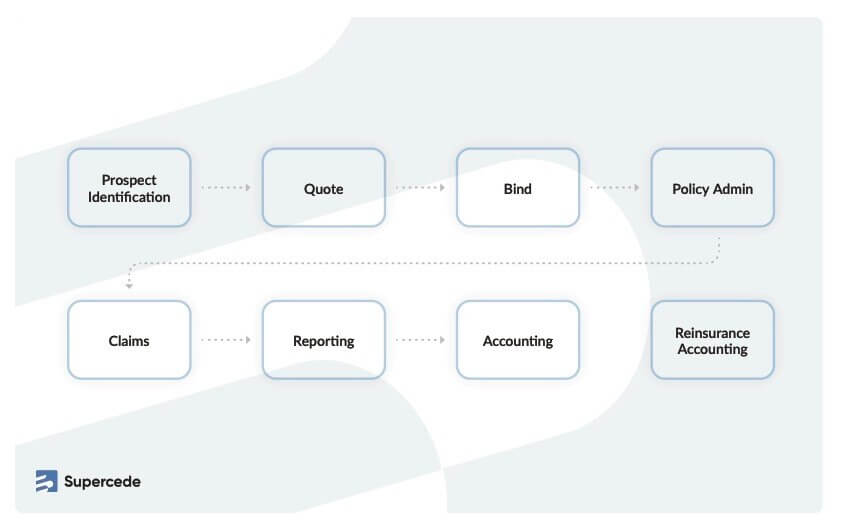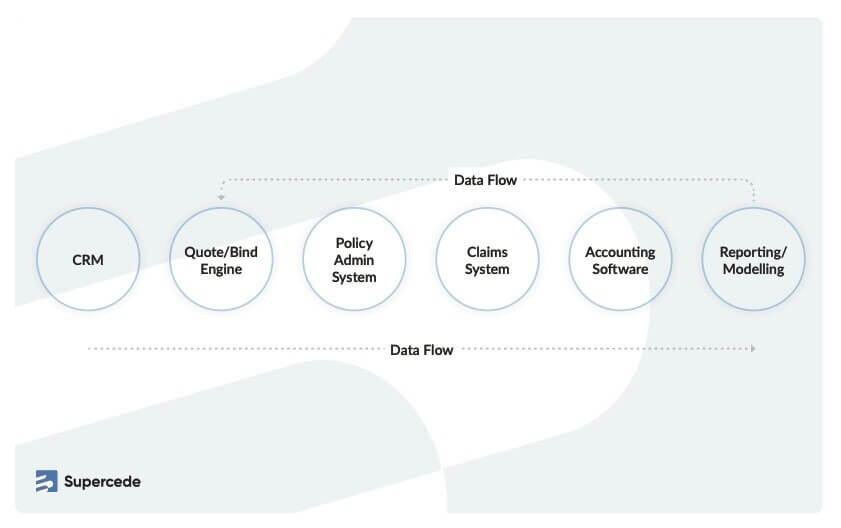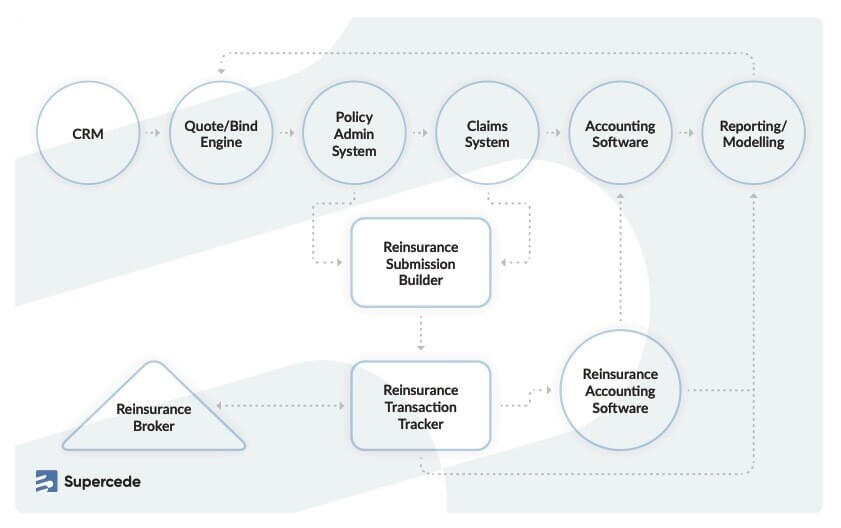Ask Any Strategy Consultant, All Digitisation Initiatives Begin by Mapping an Ideal Data Flow Across the Organisation.
Digitisation is transforming the insurance industry, streamlining processes and making it easier for companies to manage their operations.
But despite the advances being made in digitisation, one area is often neglected: reinsurance.
The diagram below shows how data flows across your customer lifecycle and business processes.
It begins with ideal customer data and targeted marketing, flows through quote, bind and ends with reporting and accounting functions.

Sometimes this map will have some reinsurance functions included but can you spot any gaps?
That’s right - there’s often no data flow between insurance and reinsurance data.
When mapping out an ideal data flow in digitisation initiatives, reinsurance processing is often omitted, and the assumption is made that the existing systems can be modified to fit reinsurance transactions.
This approach not only ignores the unique nature of reinsurance data, but it also leaves the door open for data leakage and the need for manual intervention.
Reinsurance purchases are based on insurance risks, but they are not the same and should not be treated as such.
Some consultants might lay things out differently; same functions but they’ll map out systems where the data will live and try to illustrate how it flows through the business processes.

Now, the reinsurance processing doesn’t even appear on this diagram.
Why?
The reason all too often is that it’s assumed or recommended that the processing of reinsurance data should take place in the pre-existing systems by building exceptions or ‘hacking’ existing processes to make complex reinsurance transactions and accounting fit into them.
It’s Negligent to Recommend That Insurance Processes Are Modified at Source to Store or Transfer Data for Reinsurance Processes.
Reinsurance purchases are based on underlying insurance risks but those risks are not the same and should not be treated as such.
It’s not logical to store reinsurance contract information in a PAS because it’s doing the opposite thing to all of the other data in that system.
This reversal of value means that almost every field of data needs to be used in the opposite context.
The same applies to storing reinsurance claims information in the same environment as your underlying insurance loss information.
Using common accounting tools makes more sense (provided you can reverse the value flow from the policy and claims systems) but the accounting practices are different.
Could you imagine a private policyholder reconciling premiums due against losses incurred in a monthly statement of account?
By the way, this only covers the administration of the reinsurance contracts.
And the challenges don't stop there.
We haven’t even begun to consider the placement and buying process for reinsurance - where do we:
- Track progress of our placements
- Performance against budget
- YoY comparisons on exposure for different treaties
- Quoting behaviour of markets
- Performance of brokers
Reinsurance is the single biggest source of balance-sheet stability over time, yet it’s treated by consultants as an afterthought in digitisation initiatives all too often.
Maybe it’s a lack of understanding.
Maybe people think if they crack the accounting then this is 90% of the problem.
They're wrong.
Using this approach, only focusing on the accounting piece, then it’s almost impossible to get the right data into the right place at the right time.
There is a better way.
Create a System of Pipes With No Leaks and Protect the Balance Sheet Without Trying to Hack or Second-Guess the System
Imagine a scenario that looks a little more like this:

This avoids a situation where data is crammed into systems not built to handle it, meaning data can be used in useful ways elsewhere in the process.
The solution, as you can see, is to create a system of pipes with no leaks.
That's where Supercede comes in.
Supercede acts as the missing link in your data infrastructure, streamlining the flow of reinsurance data, and avoiding the problems associated with hacking existing systems.
With Supercede, you can have peace of mind that your reinsurance data is being managed effectively, without any leaks.
Reinsurance should not be treated as an afterthought and by streamlining the flow of reinsurance data, you can avoid the risks associated with manual intervention and ensure that your balance sheet is protected.
A proper reinsurtech solution will allow you to manage reinsurance data effectively and stay ahead in the rapidly evolving insurance industry.
Don’t get left behind!


